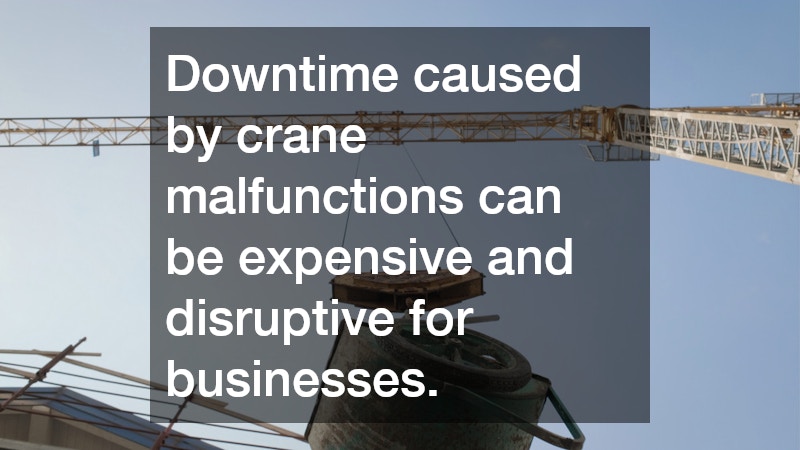In the fast-paced world of construction and heavy industry, downtime can cost businesses thousands of dollars in lost productivity. One of the most critical pieces of equipment that can halt operations when it fails is a crane. Whether you operate a small construction company or manage a large industrial site, understanding how to maintain and repair your cranes is essential. This article explores practical strategies and insights for keeping your operations running smoothly through effective local crane repair and maintenance practices.
Understanding the Importance of Crane Maintenance
Cranes are complex machines with multiple moving parts, hydraulic systems, and safety mechanisms. Even minor issues can escalate quickly if not addressed promptly.
Regular maintenance is not just about prolonging the life of your equipment—it’s about preventing costly downtime and avoiding safety hazards. By scheduling routine inspections and adhering to manufacturer guidelines, businesses can detect potential problems early.
Local crane repair services often provide comprehensive maintenance packages that include lubrication, structural inspections, and component testing. Partnering with a reliable local service provider ensures that your cranes remain in peak condition without unnecessary delays. This proactive approach can save businesses significant repair costs in the long run and reduce the risk of accidents on site.
Common Crane Issues and How to Spot Them
Understanding common crane problems is key to minimizing downtime. Some of the most frequent issues include hydraulic leaks, worn-out cables, brake failures, and electrical malfunctions. Ignoring these warning signs can lead to complete equipment failure, which can halt an entire project.
Signs that your crane may need attention include unusual noises, jerky movements, slow operation, or visible wear on components. Regularly monitoring these indicators can allow businesses to take swift action. Local crane repair technicians are trained to identify these issues quickly and provide targeted solutions, ensuring that minor problems do not escalate into major disruptions.
Another often-overlooked factor is environmental impact. Cranes operating in harsh weather conditions or dusty environments are more prone to corrosion and mechanical wear. By accounting for these conditions during routine inspections, businesses can anticipate problems before they become critical. This foresight can save both time and money, ensuring projects stay on schedule.
Tips for Choosing the Right Local Crane Repair Service
Selecting a trusted local crane repair service is critical for maintaining operational efficiency. Not all repair providers offer the same level of expertise, so it’s essential to do your research. Start by looking for companies with certified technicians and experience in servicing cranes similar to yours.
Ask potential service providers about their response time, availability for emergency repairs, and the types of maintenance packages they offer. A reliable local provider should also be transparent about costs and provide a clear estimate before starting any work. By choosing the right partner, businesses can minimize downtime and ensure that crane repairs are performed efficiently and safely.
Additionally, consider building a long-term relationship with a single provider. This consistency allows technicians to become familiar with your equipment and operational patterns, resulting in faster diagnosis, more personalized service, and fewer unexpected disruptions.
Preventive Measures to Reduce Crane Downtime
While professional local crane repair is essential, businesses can also take proactive steps to prevent breakdowns. Implementing routine inspections, keeping a detailed maintenance log, and training operators to recognize early signs of wear can significantly reduce the likelihood of unexpected downtime.
Investing in high-quality parts and ensuring that replacement components meet manufacturer specifications can enhance crane reliability. Simple practices, such as cleaning and lubricating moving parts regularly, can extend equipment life and improve overall performance.
Another useful approach is to schedule preventive maintenance during low-activity periods. For example, planning inspections or minor repairs over weekends or scheduled breaks can reduce the impact on production timelines. Additionally, providing operators with training sessions focused on daily equipment checks can catch potential issues before they become serious problems.
By combining these preventive measures with the support of a trusted local crane repair service, businesses can create a holistic maintenance strategy. This approach not only reduces downtime but also improves safety, efficiency, and overall project reliability.
Downtime caused by crane malfunctions can be expensive and disruptive for businesses. By prioritizing regular maintenance, recognizing common issues early, and partnering with reliable local crane repair services, companies can keep their operations running smoothly and safely. Preventive measures, combined with expert repair services, not only extend the life of your cranes but also protect your bottom line.
With a proactive approach that includes routine inspections, operator training, and strategic partnerships with skilled repair technicians, businesses can significantly reduce unexpected delays. Investing in proper crane care today ensures that your business can operate efficiently tomorrow, avoiding unnecessary downtime, costly repairs, and safety risks.

